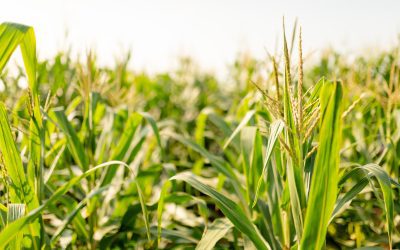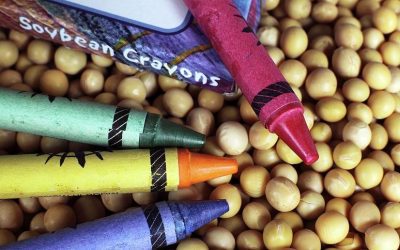This growing season, soy is projected to overtake corn when it comes to acres.
The USDA’s National Agricultural Statistics Service’s (NASS) prospective plantings report, released March 31, estimates a record 91 million acres of soybeans will be planted in the United States this year, a 4 percent increase from 2021. Corn acreage is projected at 89.5 million acres, 4 percent lower than 2021.
Iowa farmers are expected to plant 10.4 million acres of soybeans this year, 3 percent higher than 2021. Iowa corn acres are projected at 12.6 million acres, 2 percent less than 2021.
In a discussion hosted by U.S. Soybean Export Council (USSEC) CEO Jim Sutter, U.S. soybean farmers shared their perspectives ahead of the 2022 growing season.




Farmers participating in the webcast included:
Tim Bardole, afifth-generation farmer near Rippey, Iowa. Bardole farms with his father, brother and his son, who is the sixth generation on the farm. They grow soybeans and corn, raise pigs in a nursery and custom feed hogs. Bardole is a past president of the Iowa Soybean Association and a current director on the United Soybean Board (USB).
“We definitely have deep roots, and we care deeply about the land and the products we produce,” Bardole said.
David Nichols, a fourth-generation farmer in Ridgely, Tennessee, and a USB director. He farms with his wife and two sons. They grow soybeans, soft red winter wheat and corn. Soybeans and wheat go to export markets. The farm’s location in Tennessee allows the family to double crop their soft red winter wheat acres.
“I always tell my son, ‘If we don’t do something different, we don’t learn.’ So, we’re always trying new practices to push our yields higher,” Nichols said.
Jim Douglas, a USB director and fourth generation farmer from Flat Rock, Ind., raises soybeans, corn and hogs in a wean-to-finish system. He farms with his son, and the family raises non-GMO corn for the export market. They also grow high oleic soybeans and seed beans, which are used the following year during the planting season. “Farmers are geared up to plant this year’s crop,” Douglas told global customers during the USSEC webcast. “It’ll go in and be a successful season; we should have an ample supply of soybeans to provide everybody.”
The following is the dialogue between these farmer leaders.
Sutter: The USDA suggests more acres will be planted with soybeans this year, considering input prices and other factors. Are you shifting acreage or doing anything differently?
Bardole: We’re keeping with our normal rotation, which means we’ll have a little more corn than soybeans this year. The majority of the fertilizer is already on for the corn, and I don’t see anybody really switching. We’re farther north than some, so we can put fertilizer and nitrogen on in the fall so it’s pretty well set.
Douglas: We want to raise about 60 percent corn, but we’re prepared if the season doesn’t work out, and then we’ll go to a 50-50 split. In our part of the state, fall nitrogen application isn’t a practice that’s used. That being said, fall applications in other states will take some pressure off the supply system this spring.
Nichols: Since we’re in the south and we’re a bit warmer, we rely on in season nitrogen applications. We’re up against a tremendous price increase on the inputs side, so we’re increasing our soybean acres this year. We’ll be raising soybeans on 70 percent of the acres and corn on 30 percent. In this area of the country, soybean acres will be up.
Sutter: On your farms, how are you managing risks?
Bardole: Every year, the risks are different. The past two years, we have paid for fertilizer much earlier than usual. We try not to change much as far as inputs are concerned because of our crop rotations. We utilize the Chicago Board of Trade to price out crops into the future to limit risk.
Douglas: Over the last few years, we’ve invested in on-farm fuel, fertilizer and grain storage. We weren’t thinking about this type of (price) event to drive it, but we did think it was prudent to have those under control to have some flexibility when you buy those inputs. With our hog operation, we’ve always considered it diversification on the financial side, but now we’re seeing how valuable it is on the input side of the equation.
Nichols: As input prices started to turn higher and availability started to be an issue, I got into the marketplace and assessed crop protection and chemistries we use and secured those. We’ve seen some of those prices go up 400 percent to 600 percent from a year ago. We’re also utilizing federal crop insurance programs to shore up some of that risk. Our environment is a little bit hotter and drier, and soybeans take out some of the weather risk. In my operation, planting more soybeans is a safer play for us.
Editor’s note: This story is republished from a recent edition of the Iowa Soybean Review.



